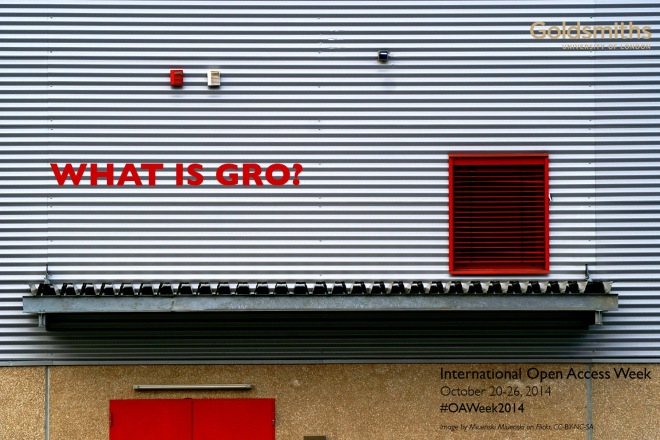This week is open access week, so here is a little introduction to the open access movement in the UK and our institutional repository Goldsmiths Research Online.
At its core, Open Access aims to make academic research free at the point of use for researchers and the public. The main reason for this in the UK is that most research is funded through various channels by the government and therefore by tax payers. By charging subscription fees for access to this research, publishers are essentially asking users to pay for the research twice and this is what Open Access aims to avoid. To facilitate this, last year the UK Government accepted the proposals set out by the Finch report, including the Open Access “gold” model as standard for publicly-funded research. Gold open access means publishing costs are paid up-front and articles are published in open access journals.
Open Access also allows the free exchange not only of research results, but also all of the data collected that led to those results. PhD Comics have made a simple but effective video explaining all the benefits of Open Access:
[youtube=http://www.youtube.com/watch?v=L5rVH1KGBCY&w=420&h=315]
Goldsmiths Research Online (GRO) serves as an archive for all the academic outputs of the College across all departments. GRO aims to facilitate “green” open access, which involves archiving an article after it has been published in a traditional journal. Depending on the publisher, there is sometimes an embargo in place before the article can be made open access, and usually only a pre-print version of the article can be archived. You can use GRO to look for the research outputs of your tutors, check on the top ten downloaded articles from GRO and even download most PhD theses submitted since 2010. GRO is our institutional repository, but you can also find repositories by subject (openDOAR), and even repositories specifically for the publication of datasets (figshare).
Find out more:
Directory of Open Access Journals http://www.doaj.org/
Jisc Open Access http://www.jisc.ac.uk/open-access
Goldsmiths library guide for researchers http://www.gold.ac.uk/library/library-research-support/
